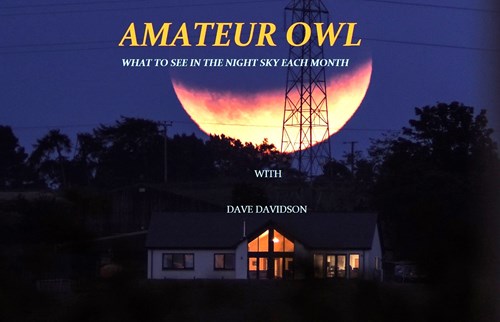
October Amateur Owl
Added on 04 October 2023
AMATEUR OWL - AUTUMN
OCTOBER NIGHT SKY
St. Agnes' Eve - Ah, bitter chill it was! The owl for all his feathers was a-cold. The hare limped trembling through the frozen grass, and silent was the flock in wooly fold. Yes, it is the season and the month of gales and frosts, the first signs of snow on the distant mountains, dark nights and the sky filled with the piercing lights of the Autumn constellations. High above, and beyond the gulf of space, the Milky Way flows through Cygnus and Lyra, dense with stars and glowing nebulae, rent here and there with bands of unfathomable darkness as it sweeps down to Aquila the Eagle. Nearby is the little constellation of Delphinus the Dolphin and this will be the focus for our telescopes and binoculars for this month. The story goes that the Greek poet Arion of Lesbos, a court musician at the palace of Periander was on his way home from Tarentum having amassed a significant wealth during his travels in Italy. The crew of his ship conspired to rob and kill him, (they're so unreliable these Greek sailors!!) but granted him a last wish which was to sing a dirge. (Not all bad then!) This he did and then jumped into the sea where he was rescued by a dolphin who had been charmed by his singing.
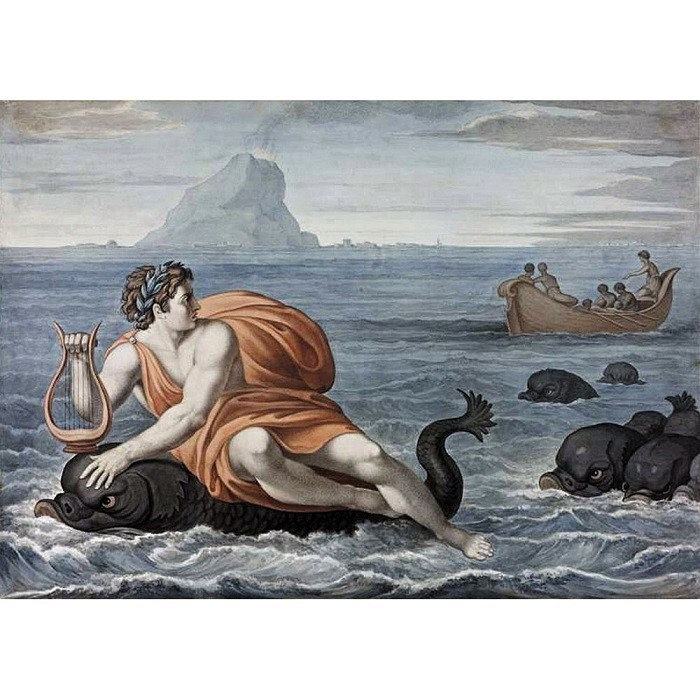
The dolphin took him to the coast of Greece and departed. This tale is commemorated in the sky by the constellation of Delphinus and the four notable stars of the asterism, also known as 'Job's coffin'.
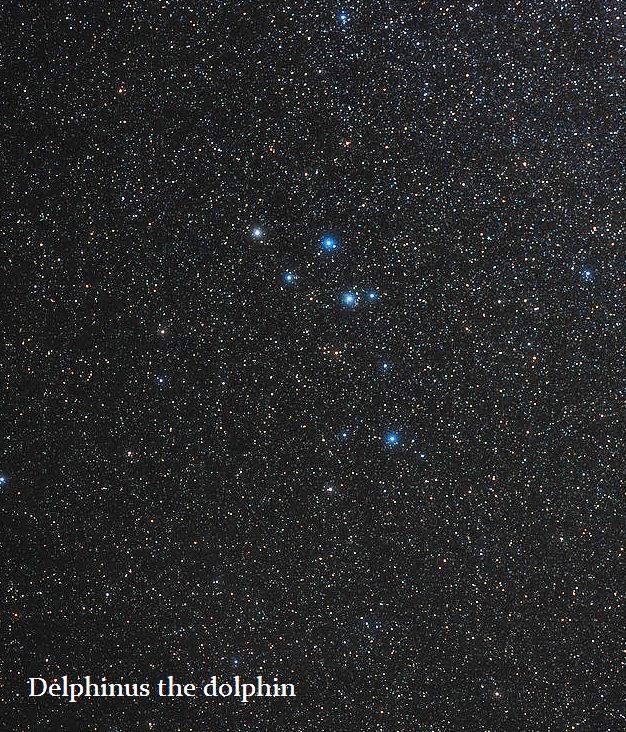
The stars in Delphinus are Alpha, Beta, Gamma, Delta, Epsilon, and Zeta. Alpha and Beta have 19th century names; Sualocin and Rotanev which read backwards spells Nicolaus Venator, the name of the director of the Palermo Observatory 1841. Gamma is a notable double star and a favourite for amateur telescopes. The pair, one described as orange and the other a lime green only need a 'small' telescope to split them and they do make a pretty sight in the eyepiece, much like Alberio in Cygnus. The orange one may have an exo-planet where 'intellects vast and cool and unsympathetic' may reside, who knows? Beta is a double star too but needs a fairly big telescope to see them, though I dare say that the telescope at the observatory would do it if you fancy trying. Zeta has a brown dwarf orbiting it. In the vicinity of Delphinus are one or two interesting deep-sky things. NGC 7006 and NGC 6934 both globular clusters, 10th and 8th mag. respectively. NGC 6891 is a planetary nebula (mag.10.5) and NGC 6905 AKA the blue flash nebula. Both are pretty faint and you will need to use the Club's 12 or 14 inch to see them but in the nearby constellations of Sagitta and Vulpecula there are a few 'easy' objects to find. In Sagitta there is M71 the 'angelfish' cluster (mag.8.4), a globular cluster and really worth a look even in a small telescope. In Vulpecula is M27 the Dumbell nebula (often called the 'apple-core') and again this is an easy one for small scopes or even binoculars in a dark sky location. Over the years, several Nova have been found in Delphinus and along with Casseopia it is a good spot for nova-hunters to focus on.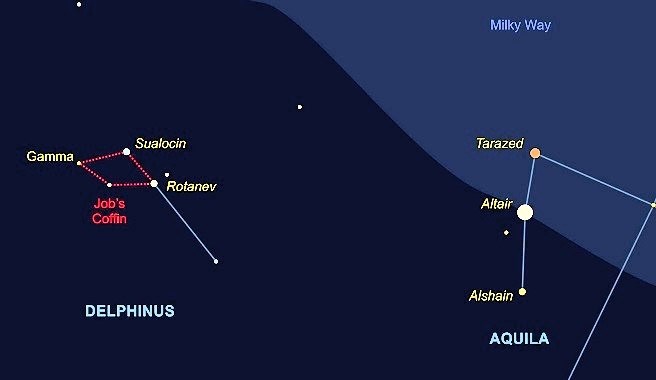
THE PLANETS.
Once again this month, the planets are a major attraction and if you time it right you can see nearly all the planets except Mars and Pluto. I know, Pluto isn't a planet and you can't see it anyway but let's not forget that it is out there somewhere. Jupiter and Saturn of course are the most notable in the evening sky. Saturn is up first and looks like a pale yellow star in Aquarius. The rings are closing all the time and it is getting harder to see the famous divisions of Cassini and Enke but all the same it is a stunning sight in any telescope and the bigger the better for Saturn! Any telescope will show the moon Titan, but the 12 inch at the observatory will let you see at least 4 of the others. Well worth a drive up to Culloden after tea to see this amazing and inspiring wonder of the night sky.
Next up is Neptune lying between the head of the lower fish in Pisces and the tail of Cetus the sea-monster. Good luck finding this tiny blue dot among the sea of stars. GOTO will help you out here.
Then there is Jupiter! 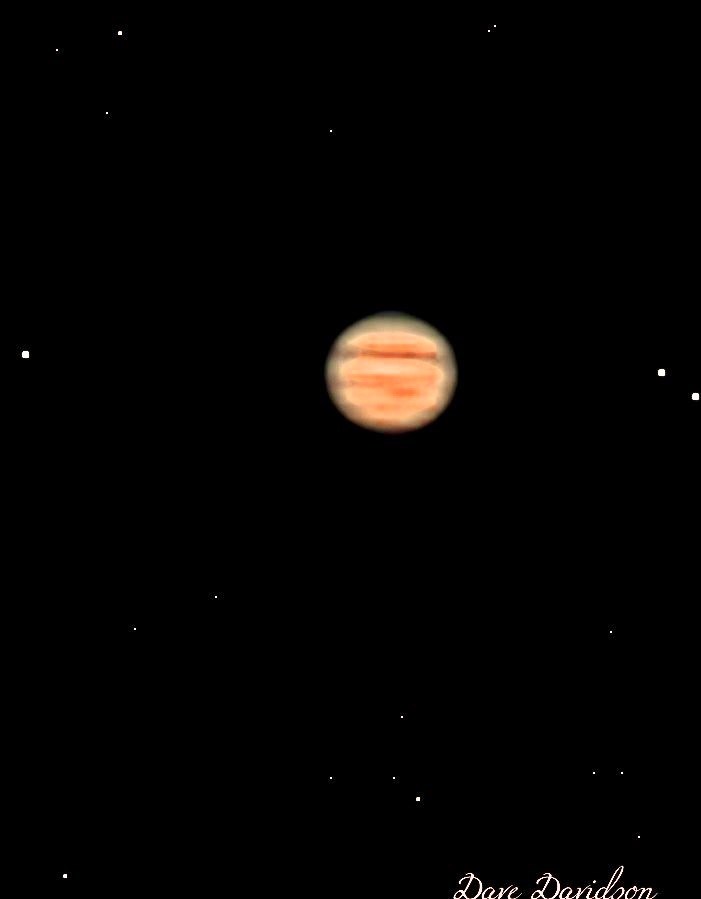 The brightest thing in the evening sky sitting above the head of the sea-monster. You don't need directions to find this planet, just look up and to the East after tea. As the night wears on Jupiter gets higher in the sky until nearly overhead by dawn. This means that it will be away from the wobbly atmosphere near the horizon and the images in your telescopes will be sharp and clear, letting you see, with incredible detail, the bands around the equator and the great red spot as it comes around. The shadows cast by the inners moons as they transit are easily seen with a 6 inch or 8 inch telescope and it truly is a marvel to watch. Just sit and watch for an hour or so to see the rotation of Jupiter and the orbits of the moons!
The brightest thing in the evening sky sitting above the head of the sea-monster. You don't need directions to find this planet, just look up and to the East after tea. As the night wears on Jupiter gets higher in the sky until nearly overhead by dawn. This means that it will be away from the wobbly atmosphere near the horizon and the images in your telescopes will be sharp and clear, letting you see, with incredible detail, the bands around the equator and the great red spot as it comes around. The shadows cast by the inners moons as they transit are easily seen with a 6 inch or 8 inch telescope and it truly is a marvel to watch. Just sit and watch for an hour or so to see the rotation of Jupiter and the orbits of the moons!
Uranus is almost mid-way between Jupiter and the Pleiades cluster at the start of the month and can be seen with binoculars if you use a star-chart to separate the surrounding stars. A telescope will definitely show you the pale blue disk of the planet.
Now, either stay up all night or get up early to see Venus and Mercury. Venus will be visible all month but Mercury will soon head back toward the Sun and the first few days of October are really the time to catch it, low on the horizon due East at 6.30 am. Naked eye maybe just before dawn and then binoculars or telescope as the light increases near sunrise. Once the sun is up though I wouldn't advise searching as the Sun will be dangerously close for sweeping the sky with anything optical.
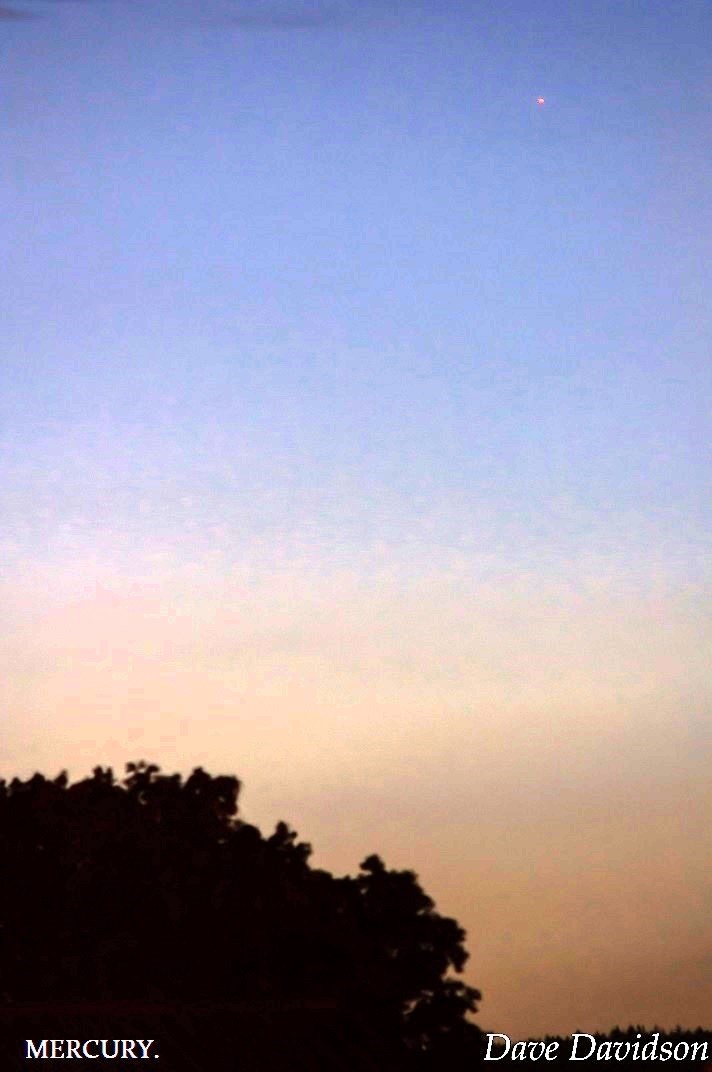
By the 4th or 5th of October it will not be visible as the sky will be too bright and it will be lost in the glare of dawn.
Venus is just unmissable at dawn and continues to be visible all through the day. A beautiful crescent approaching a 50% phase. In fact, during the day is the best time to see it in detail since the glare from its intense brightness is diluted by the Sun and it looks crisp and clear in a telescope. Even 10x50 binoculars will let you see the wonderful crescent shape of our nearest neighbour, barring the Moon of course.
So there you have it; a tour of nearly the entire solar system in the month of October!
METEOR SHOWERS.
There are two meteor showers this month, and the first of these are the Draconids on the evening of the 8th-9th.
The Draconids over recent years have not produced much in the way of spectacle but they are unpredictable and can, depending on which bit of the comet tail we pass through (21P Giacobini Zinner) go nuts and in 1933 and 1946 the rate was somewhere in the region of 500 per hour!! Who knows? we might get lucky and it would be a pity to miss something like that so it might be worth looking for them even if the expectation is low. The radiant will be the head of Draco but just look anywhere really as the radiant will be more or less overhead in the early evening. Unlike a lot of meteor showers, the Draconids are best looked for in the evening and not after midnight as is often suggested for other showers. Fingers crossed for a celestial fire-work display.
On the night of the 21st-22nd are the Orionids meteor shower. These are associated with Halley's comet and again have not been all that spectacular over the recent years but normally 20 or so per hour is not bad and they are known to produce big fire-balls from time to time so well worth a look I think. The period covering the shower is throughout October but the peak is on the night described. This is an 'after midnight' job as the radiant will only rise after 11pm near the head of Orion. The moon will be three quarters but will set before the 'peak' of the meteor stream and the sky will be dark for the best of the shower.
THE MOON.
On the night of the 3rd the Moon and the Pleiades cluster will only be 2 degrees apart! This will be a beautiful sight and make a great photo if that were possible. The dynamic range will be colossal and I can't really think of a way of dimming down the moon so not optimistic on that one. It is a three-quarter waning moon and it will be bright.
On the 10th, Venus and the Moon will sit close to each other and this time the moon will be a narrowing crescent and a photo opportunity will be possible. Nothing like as close as the Moon and Pleiades but an interesting combination all the same.
Saturday the 28th gives us a grazing lunar eclipse as the Earth's shadow just skims the lower part of the Moon. The almanac shows that we will just see it from Inverness 20.36 - 20.53 BST.
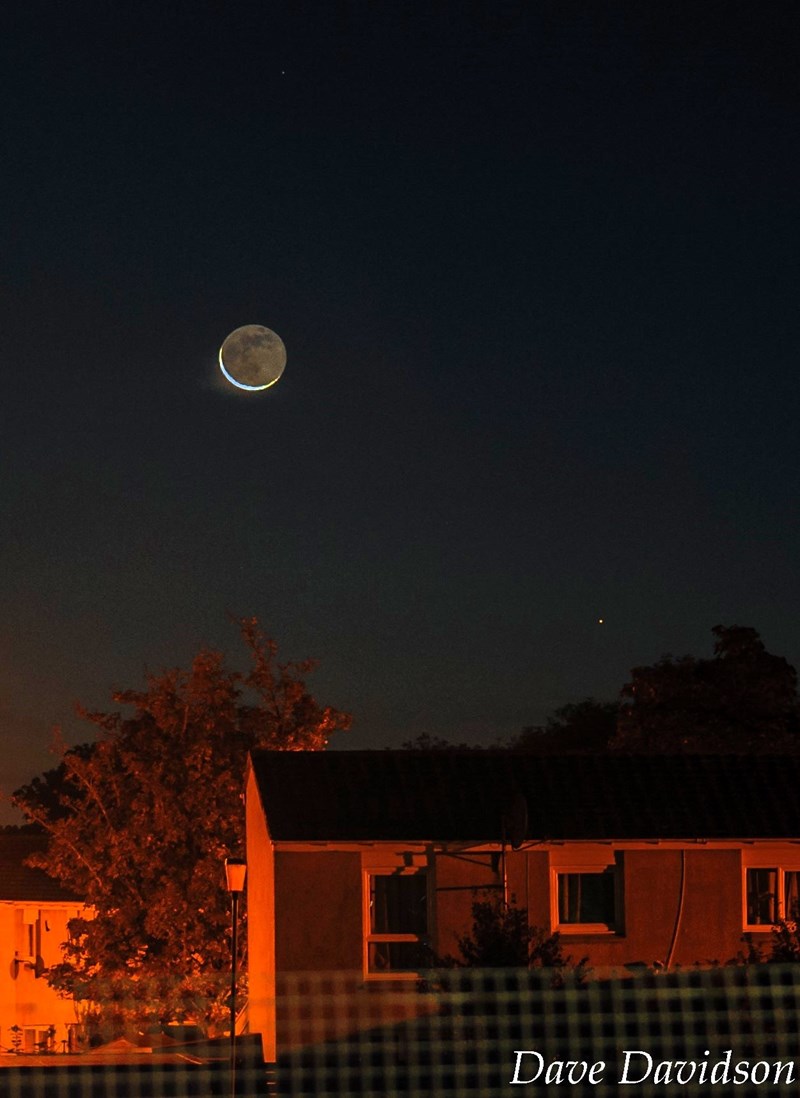
For the artists that attended the 'advanced lunar drawing ' workshop last month the crater Plato will be just as your drawings showed it. On the 6th of October after 11pm as it rises in the Eastern sky, here you will see the shadows of the crater rim stretch out across the dark grey floor. If you were to watch from 11pm through to about 2 am you would see the needle-sharp shadows creep out from the rim way out toward the other side in real time! An awesome sight even if you weren't at the workshop.
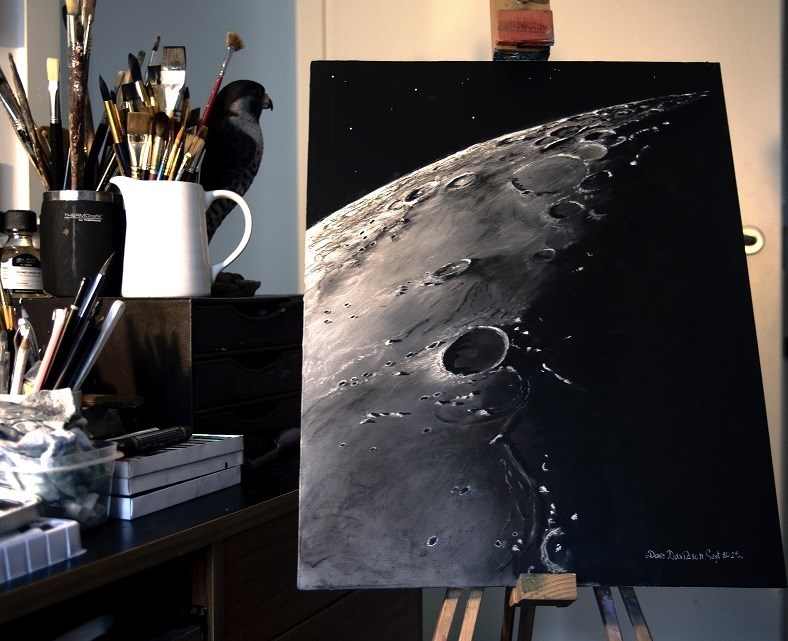
You will of course need a clear sky and a high magnification eyepiece. The same view in reverse will be on the 22nd at 8pm in the evening. The Moon will be low on the horizon and it might be difficult to get a stable view but the shadows, if you can see them will be spectacular. So, challenging in both directions, but like trying to catch a trout, if it were too easy we wouldn't bother! Best of luck.
MESSIER CHALLENGE.
Once again this month the night sky offers a long list of objects for anyone doing the 'Messier Challenge'. In the SSW, low on the horizon, a chance to catch the 'tricky' ones M23, M25, M28 and M10. It will be dark at 8pm and they will still be above the horizon. You will need an unobstructed horizon though. Culloden battle-field will be fine. As the month progresses, Auriga will be climbing higher and here you will find M36, M37 and M38 all in a row together. By the 22nd of the month around 9pm you will have a chance to see the elusive M1, the Crab Nebula. Those and many more to see in October. If you need help in finding any of the Messier objects then seek out Paul Moffett or Dave Davidson who will gladly point them out for you.
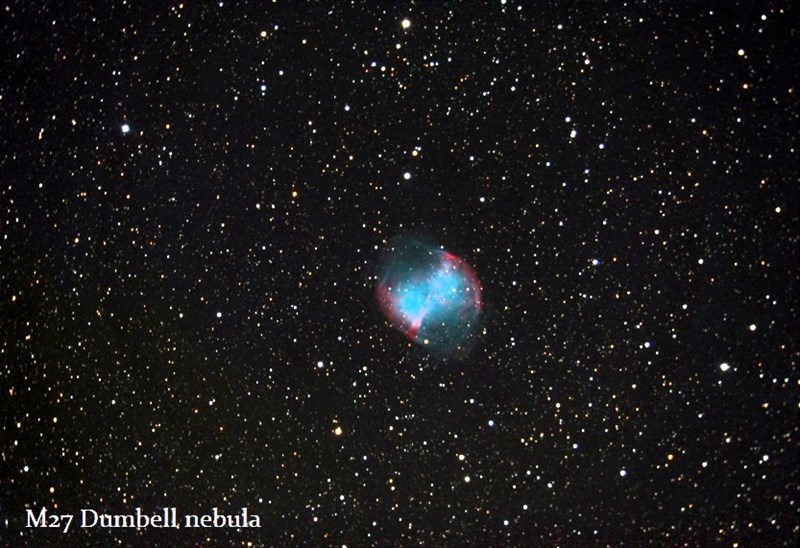
AURORA BOREALIS.
As the Sun continues toward solar maximum then the chances to see the aurora grow exponetially and if September is anything to go by then October should be even better. There will always be notification of any outbursts on WhatsApp and if you are not on that group then the 'Glendale App' is a good alternative and beyond that is the 'Space-weather' website. The phenomena of the aurora can be fleeting, with periods of inactivity suddenly becoming a 'light show' without warning so when you are out chasing the eerie, green and violet streamers be patient and wait out the episode. Very often what appears to be just a green haze on the horizon will quite literally explode into towering purple spires and misty green curtains of ethereal incandecence, flaring up in a moment and turning the sky into a fairy-tale world of celestial castles filled with wonder. For more information on the aurorae and especially how to photograph them, then speak to Lisa Pattenden. What she doesn't know about aurora - chasing would easily fit on the back of a fag-packet.
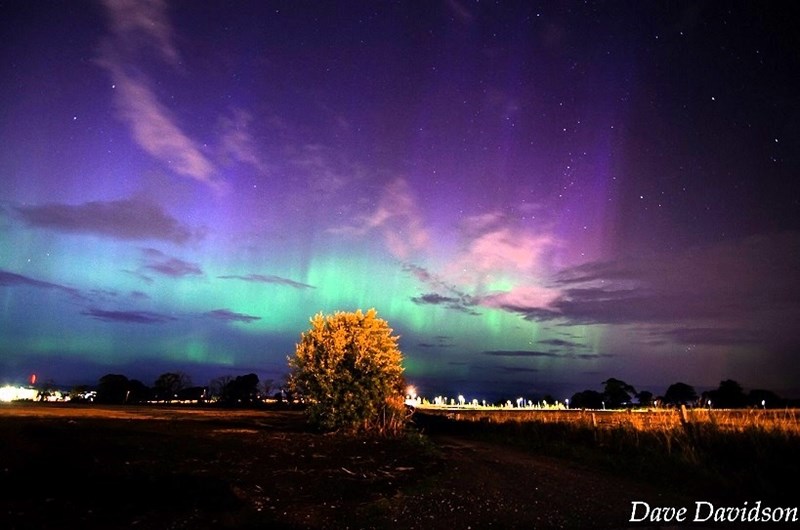
HALLOWEEN.
And finally, a little something to ponder, research or what you will. The origin of Halloween.
Also known as the Day of the Dead, All Souls and St. Agnes Eve the period around Halloween has some astronomical connections which are interesting. The Earth's orbit intersects the Taurid meteor stream twice each year, firstly on the 30th of June and again on the 1st of November.
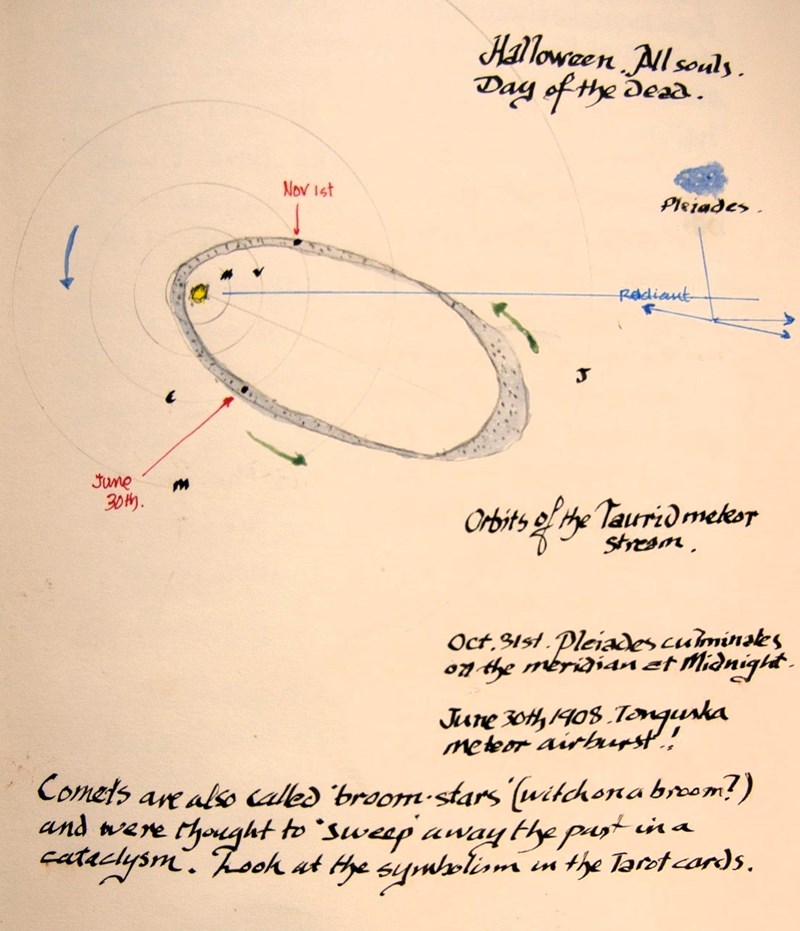
The November pass coincides with Halloween and takes several days at least which also covers the period of the globally recognised celebration of the Day of the Dead, All Saints and All Souls day. The global connection was recognised by Robert Grant Haliburton (1831-1901) and he concluded that all over the world people marked this time in the same way, whether religious or pagan and that it was a celebration of the dead. The Celtic year too ends on November the 1st and is known as Samhain, celebrated by Druids in pre-Christian times and it is also a vigil for the dead. The radiant for the Taurid meteor stream is near to the Pleiades just above the shoulder of Taurus the bull. (incidentally, depicted in the Lascaux cave paintings which shows the star-cluster above the bull, dated to be 14,500 BC). The Pleiades rises in the east on the 31st of October and culminates on the south meridian at midnight at the same time as the Earth enters the meteor stream. The Taurid stream is associated with Enke's comet and is known to contain some large fragments along with the usual dust and small debris. These large bodies, known as Apollo asteroids, first discovered in 1932 can be up to 10km wide and their orbit is inclined at 12 degrees to the orbit of the Earth, making an interaction quite likely. The Tunguska meteor airburst over Russia in 1908 was on the 30th of June. Same time as the Earth makes its first contact of the year with the Taurid stream. At Halloween we talk of witches on broomsticks but why broomsticks? Well, comets are also known as 'Broom-stars' as the tail of the comet was thought to sweep away the World in a catastrophe which is why people were once very supersticious of comets. Given that this day of 31st October is remembered all over the World and for thousands of years dating back to the Incas, the ancient Egyptians, the Maya, the Australians etc, and that the astronomical connection to the Pleiades and Taurus can hardly be coincidental then we may be carving our pumkins with a new understanding of why we do it! I leave it to you to join up the dots; there is far too much data out there to include here. Happy Halloween!!